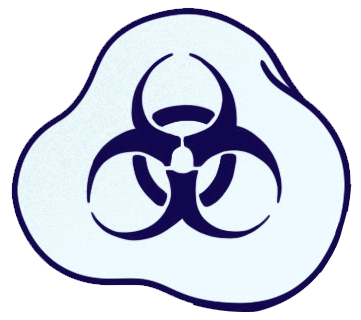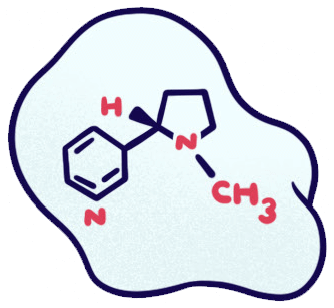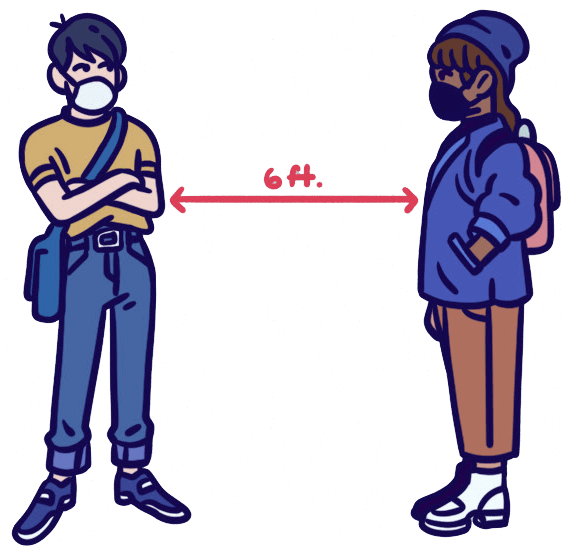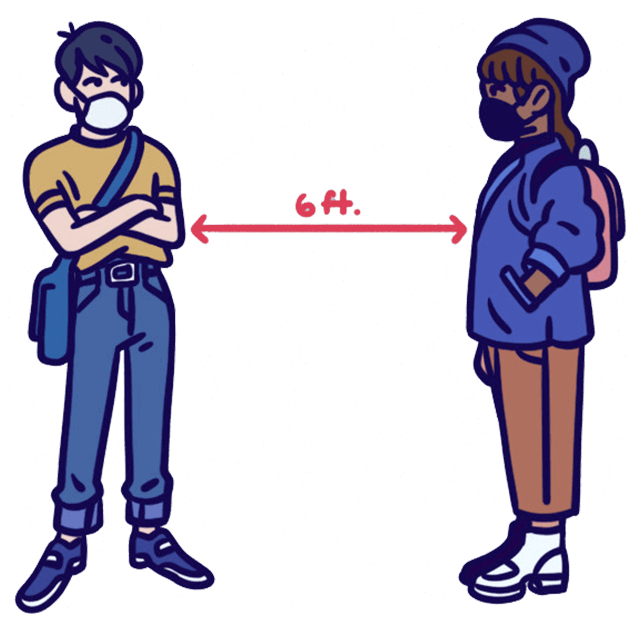Click on the different images to
find out facts about the dangers
of vaping.

Contains Nicotine
The liquid inside most vaping devices, including Juul
products and Puff Bars, contains nicotine.
This is the same highly addictive drug found
in tobacco cigarettes. Teens are especially
at risk for nicotine addiction.

Teens at Risk
Did you know your brain isn’t “done”? The teen brain is
especially vulnerable to the harmful effects of nicotine
because it’s still developing in important ways.
Using nicotine as a teenager can lead to
addiction, cause learning and memory
problems, and increase the risk of
addiction to other drugs.

Attacking the lungs
Vaping, like smoking, can diminish lung capacity, and
can put a person at risk of developing serious lung
diseases such as emphysema, chronic bronchitis,
and possibly even COVID-19. Researchers are
working to better understand the
relationship between COVID-19
and vaping.

Toxic Chemicals
When someone puffs on a vaping device, or e-cigarette,
a battery heats up a liquid inside. The liquid then gets
turned into an aerosol, which is inhaled.
The aerosol can contain toxic metals
and substances like formaldehyde
that may be harmful to
human health.

Nicotine Exposure
Teens may not realize how much nicotine they are
exposed to if they vape. A single pod from
a Juul product can contain as much nicotine
as a whole pack of cigarettes. Some models
of Puff Bars contain even more.

Environmental Worries
E-cigarette waste can harm the environment if it is
not disposed of properly. The liquids contain
chemicals such as heavy metals that are toxic
and harmful to plants and wildlife.

Smoking Risk
Studies have shown that teens who vape are more
likely to try other tobacco products, like
conventional cigarettes.

Flavor Dangers
The flavor chemicals (such as fruit) added to the liquid of many
devices can be safe to eat, but may be dangerous to inhale.
What’s the difference? When you eat flavoring
chemicals, your liver filters the blood coming
from your digestive tract before it travels
to the rest of the body. But when you inhale
them, the chemicals go directly into your
lungs, then head straight into your
bloodstream without
being filtered. This
increases their
potential to
cause harm.

Misleading Labels
Some e-cigarette labels don’t reveal that the
liquids inside them contain nicotine. Scientists
have even detected nicotine in some
e-cigarettes that claim to be nicotine-free.
Juul Source: CDC, 2020, “Quick Facts on the Risks of E-cigarettes for Kids, Teens, and Young Adults.” Puff Bars Source: Truth Initiative, 2020, “What Are Puff Bars?”
Source: NIDA, 2020, “Vaping Devices (Electronic Cigarettes) DrugFacts.”
Sources: NIDA, 2020, “NIDA Director Outlines Potential Risks to People Who Smoke and Use Drugs During COVID-19 Pandemic.” UCSF, 2018, “First Evidence Linking E-Cigs to COPD in the Population.”
Source: NIDA, 2020, “Vaping Devices (Electronic Cigarettes) DrugFacts.”
Juul Source: CDC, 2020, “Quick Facts on the Risks of E-cigarettes for Kids, Teens, and Young Adults. Puff Bars Source: Truth Initiative, 2020, “What Are Puff Bars?”
Source: Truth Initiative, 2020, “What Are Puff Bars?”
Source: NIDA, 2020, “Vaping Devices (Electronic Cigarettes) DrugFacts.”
Sources: CDC, 2020, “Quick Facts on the Risks of E-cigarettes for Kids, Teens, and Young Adults.” NIDA, 2020, “Three Surprising Risks From Vaping.” Web MD, 2018, “Cinnamon-Flavored E-Cigs May Bring Lung Dangers.”
Source: CDC, 2020, “Quick Facts on the Risks of E-cigarettes for Kids, Teens, and Young Adults.”




























